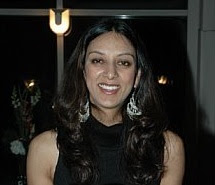Today we spent the day in Nandnargh, a slum community in east Delhi. The air was so thick there that I could hardly breathe, but kids, vendors and elderly workers seemed to be doing just fine. We got to the Community Outreach Clinic, which is run by St. Stephens Hospital's profits (see earlier blog), around 9 am. We woke up at 5 am in order to get there on time! That's how bad Delhi traffic is.
For the first part of the day, we learned about how the clinic got started in 1992. It serves 90,000 people (yes, 90,000) and has programs as varied as DOTS (directly observed treatment short-term) for tuberculosis (TB) and child-to-child education, where elder students teach a variety of things to younger children. These programs are successful, yet there are some failures. For instance, multi-drug resistant TB cases are found; the doctor showed us the extensive paperwork for two cases. Some people who fail the first treatment approach are called "defaulters" because they don't show up to get their medications. These people are candidates for Paul Farmer's method of finding a patient advocate who ensures that the patient takes his or her TB medication in a timely manner. Dr. Robin, the physician who spent the most time with us, mentioned that it is rarely a family member who is appointed as a patient advocate, because relatives are likely to sympathize with the patient rather than enforce their treatment regimen. Instead, neighbors are used.
Dr. Robin also acquainted us with the clinic's efforts to empower women and youngsters to operate small businesses. He told us of the challenges to encourage young boys to fry snacks and sell them on the street. They were getting harrassed or were not selling well because they didn't know how to bargain, and because they had little variety of snack foods. Their lack of variety led customers to believe they had stolen a few goods from a legitimate vendor to sell them off and make a small profit. Expanding the selection of goods is a current challenge. The girls are now being taught to make jewelry, and already make burlap bags with simple embroidery designs and other embellishments. We were able to visit their small store, and even saw them practicing their sewing skills on newspapers. Women are also involved in making and selling spices. All of these budding entrepreneurs are coached so that they learn how to buy the raw materials, make their product, market it and sell it for a competitive price.
We also met Dr. John, an arthritis sufferer whose dedication to the community is unwavering. She showed us the CRECHE, the day-care center for children living in poverty from broken homes. Many of the kids suffered from "child bashing," but Dr. John reports that some of the children seem happier after coming to the center, because at least they experience moments of love, affection and companionship. They were such exhuberant kids. We pulled out our cameras and showed them the photos we took of them. They were so excited. I really felt like I connected with them, and almost wanted to stay there and be their "didi" (sister), as they respectfully called me.
Mid-day, we listened to a presentation on malnutrition given by Dr. Vinita Gupta. She outlined major challenges in micronutrition in India, including deficiencies in vitamin A, iodine, iron and folate. There were several physicians in the room, one of which was a prominent figure in Indian medicine whose name now escapes me. He argued that micronutrition is not so important to discuss as macronutrition. The sentiment of these physicians is that while the extensive, expensive research being done on these trace elements is impressive, what could we accomplish in the field in terms of combating malnutrition if those research dollars were earmarked for a more practical cause? Researchers come out with different, often conflicting opinions on diet all the time--even in India. It is confusing to the public and confounds common sense. Emphasizing a balanced diet, and focusing on getting impoverished communities enough calories, is what's really important.
After a delicious vegetarian meal that cost 20 rupees (roughly 50 cents), Sejal, Emma, Paul and I spent the second half of our day at the center at the malnutrition clinic, where malnourished babies are tended to. One of the babies we saw had pica--due to a deficiency of minerals, he was eating dirt and ice. Like many (most) of the children there, he also needed to be dewormed every six months. The prescriptions written at the clinic are free; while most women dress in lively colors and wear ample jewelry, they live at or below the poverty line. In most cases, the jewelry they wear is all that they own from the dowry their parents scraped together for their marriage.
It was another awesome day!
Subscribe to:
Post Comments (Atom)

1 comment:
Far, I'm really enjoying reading about your experiences and can't wait to see pics/ videos when you get home. Stay safe and continue to keep your eyes open to everything.
Post a Comment